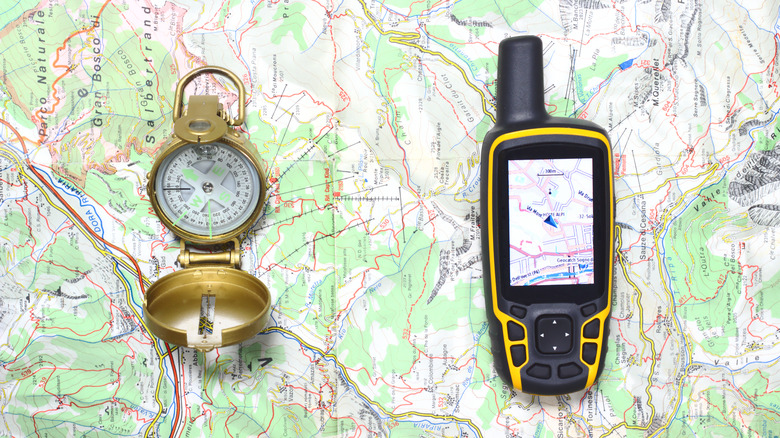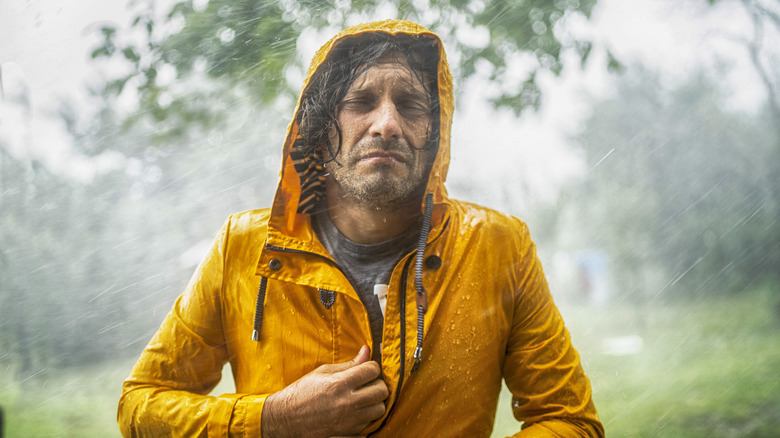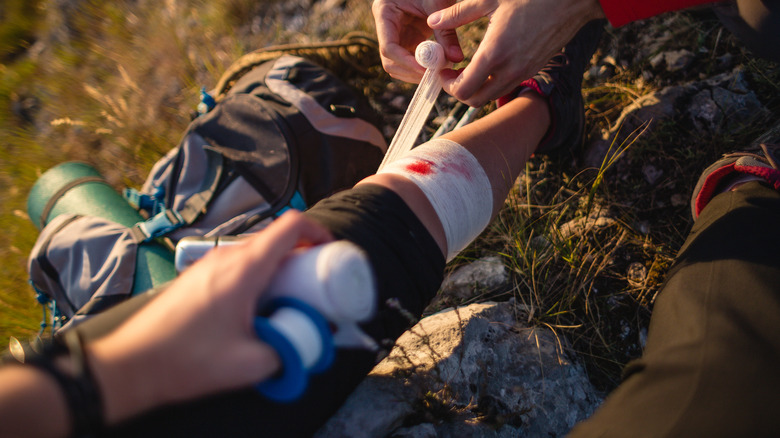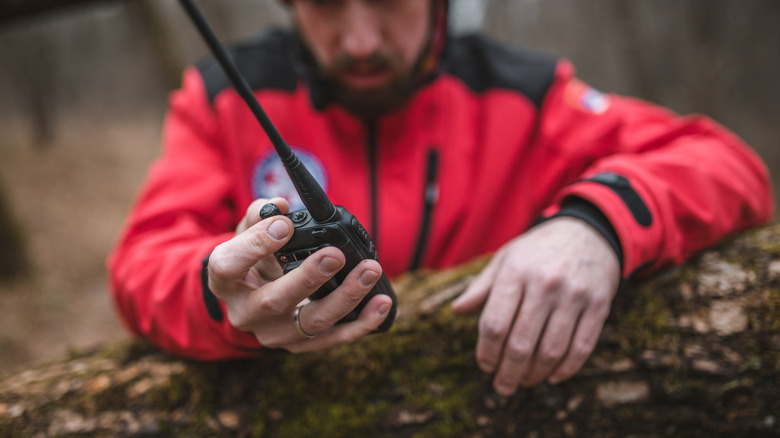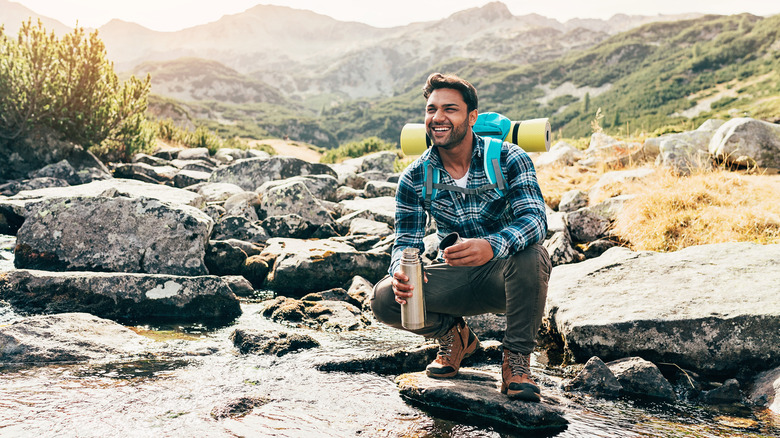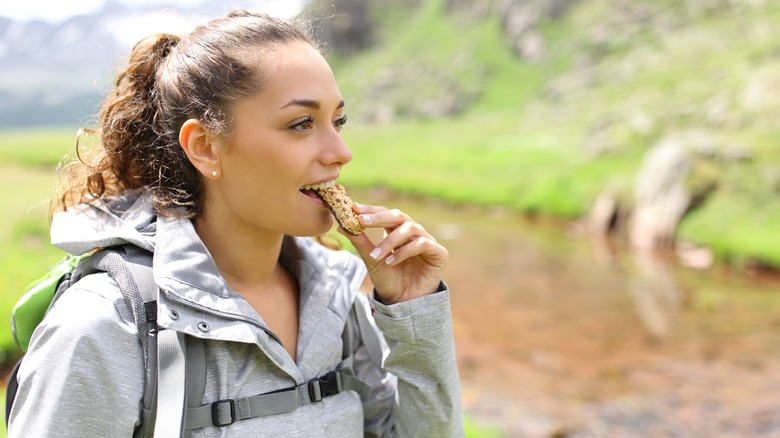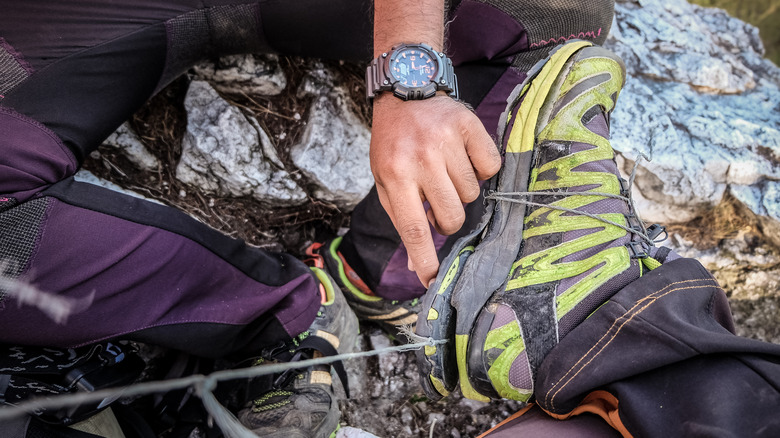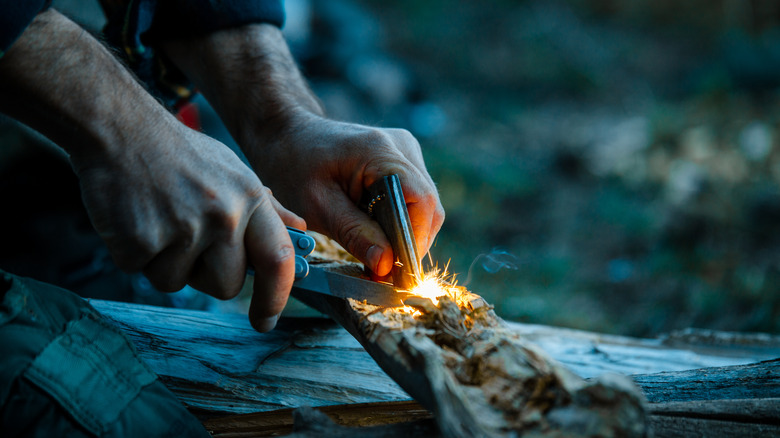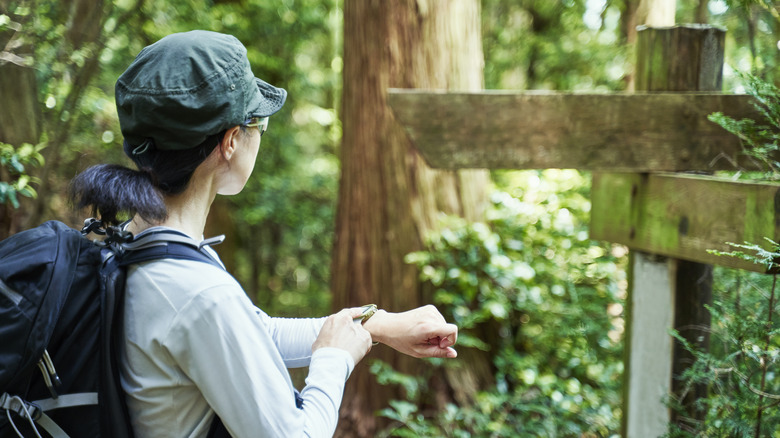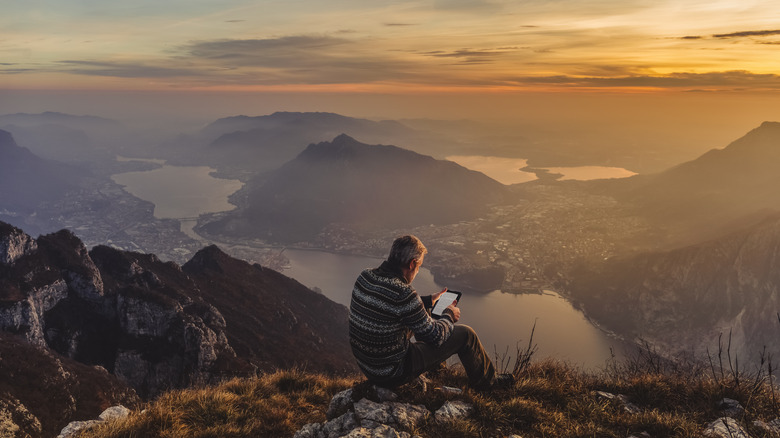10 Hiking Essentials You Need In Case Of An Emergency
Embarking on an expedition into the great outdoors is a journey that promises not only breathtaking scenery and unparalleled adventure but also a series of challenges that underscore the importance of preparation. Nature, in all its grandeur, can be unpredictable, and as outdoor enthusiasts, it becomes our responsibility to equip ourselves for the unexpected. In the realm of hiking, where every trail presents a unique set of circumstances, the adage "plan for the worst, hope for the best" takes on heightened significance.
So, to help you prepare for your next adventure, we will delve into the critical aspect of preparedness, emphasizing ten essential items (or types of) that can mean the difference between a pleasurable, or even routine, hike and an unforeseen emergency. From navigation tools that go beyond digital reliance to communication devices that bridge the gap between isolation and rescue, each element serves a purpose in mitigating risks and enhancing overall safety.
Stay on course with appropriate navigation tools
The timeless alliance of a compass and map forms the bedrock of wilderness navigation. Unlike digital devices, these manual tools don't rely on batteries or signal strength, making them reliable even in the most remote locations. A compass provides a cardinal direction reference, while a detailed topographic map offers a visual representation of the terrain, helping you anticipate challenges and plan your route strategically. Of course, these tools are only as useful as how you use them, so make sure you learn how to read a map and use a compass before your trek.
While traditional tools have their merits, modern technology has introduced the Global Positioning System (GPS) device, offering unparalleled accuracy and real-time navigation. A handheld GPS can pinpoint your exact location, track your progress, and provide valuable data such as altitude and distance traveled. It's a valuable backup to traditional methods, especially in areas with complex trail networks or when visibility is limited.
Having the right tools is only part of the equation; understanding your chosen route is equally crucial. Familiarizing yourself with the terrain, elevation changes, and potential landmarks not only aids in efficient navigation but also serves as a safety net. In case of unexpected challenges or emergencies, knowing your route, by conducting research beforehand, enables you to communicate your location more accurately to rescuers, increasing the chances of a swift and precise response.
Stay warm and visible with the right shelter and protective gear
An unexpected turn of events can leave even the most seasoned hiker exposed to the elements. Hence, packing a lightweight emergency shelter is a non-negotiable aspect of your hiking gear. Whether it's a compact tent designed for quick assembly or a space blanket that reflects and retains body heat, having a portable shelter can make the difference between enduring a night in relative comfort and facing the harsh realities of the wilderness.
In addition, the importance of dressing appropriately for the prevailing weather conditions cannot be overstated. Layering is key to managing body temperature and adapting to changing climates. Waterproof and windproof outer layers provide protection against the elements, while moisture-wicking base layers keep you dry from perspiration. Additionally, a hat and gloves are indispensable in warding off heat loss from the extremities.
As daylight wanes or unexpected delays extend your hike into the evening, a reliable headlamp or flashlight becomes your beacon in the dark. Though modern hikers may resort to their phones, phone batteries are temperamental. In adverse weather, no one wants to risk losing their phone to the elements. So, always carry a headlamp for hands-free navigation and a flashlight as a backup. Ensure that both are equipped with fresh batteries, and consider carrying extras. This not only aids in safe navigation but also makes you visible to others, an important aspect for both group and solo hikers.
Be your own first responder using first aid kits
A comprehensive first aid kit forms the cornerstone of your self-rescue toolkit. Include bandages, adhesive strips, antiseptic wipes, and sterile gauze to address minor cuts, abrasions, and injuries. Tweezers and scissors can prove invaluable for removing splinters or cutting bandages. Pain relievers, such as acetaminophen or ibuprofen, can alleviate discomfort, while adhesive tape ensures that dressings stay in place.
For individuals with specific health conditions, having a supply of essential prescription medications is non-negotiable. Ensure that medications are stored in waterproof and airtight containers to maintain their efficacy. Keep a clear record of the medications, dosages, and any pertinent instructions to facilitate communication with medical professionals in case of an emergency. When it comes to personalized health needs, items such as an EpiPen or an inhaler become critical components of your first aid arsenal. Tailor your kit to address specific health concerns unique to you or your group members. Customization ensures that you are not only prepared for common injuries but also equipped to handle individual health emergencies.
By embracing the philosophy of being your own first responder, you are not just carrying a first aid kit; you are carrying a lifeline to your well-being in the great outdoors. Regularly check and replenish your supplies, ensuring that they are within their expiration dates. Additionally, take the time to familiarize yourself with basic first aid techniques, empowering yourself to act swiftly and decisively when faced with unexpected health challenges on the trail.
Always stay connected with communication devices
In an age dominated by technology, your cell phone emerges as a multifaceted tool, assuming the role of a lifeline in the wilderness. Ensure your phone is fully charged before embarking on your adventure, and consider carrying a portable charger to replenish its battery. Even if you don't have cellular reception, these days, a charged phone can still be used for GPS navigation, photography, and as a last-resort communication device in emergency situations.
For group hikes or areas with limited cell reception, a two-way radio becomes an invaluable asset. Unlike phones, two-way radios function independently of cellular networks, allowing direct communication between group members over short distances. Prioritize a model with a sturdy build, a long battery life, and, if possible, waterproof features to withstand the rigors of outdoor environments.
In scenarios where verbal communication might be compromised, an emergency whistle can bridge the gap. Its piercing sound travels over long distances, surpassing the reach of the human voice. This is particularly crucial in situations where visibility is limited, signaling for help becomes imperative, or as a means of alerting others to your presence.
Safely quench your thirst
Embarking on a hiking adventure demands a strategic approach to water management. Carry a sufficient supply of water to sustain you through the entire journey, factoring in the trail's duration, weather conditions, and your personal hydration needs. Adequate water intake is not just a matter of comfort; it's a fundamental aspect of maintaining physical and cognitive functions, ensuring you're at your best on the trail.
Nature's water sources can be enticing, yet they pose potential risks due to contaminants. Integrate water purification tablets or a reliable filter into your gear arsenal. These tools act as guardians, allowing you to transform water from rivers, lakes, or streams into a safe and potable form. Lightweight and easy to use, they provide a layer of security against waterborne pathogens, ensuring that your hydration source is not compromised by unforeseen contaminants.
Staying hydrated is not merely a nicety; it is the cornerstone of a successful and safe hiking expedition. Dehydration can lead to a myriad of issues, including fatigue, dizziness, and impaired decision-making—each a potential hazard in the wilderness. Make a conscious effort to sip water regularly, especially in warm or high-altitude environments where fluid loss is accelerated. A well-hydrated body is better equipped to handle physical exertion and adapt to changing conditions on the trail.
Fuel your adventure wisely
Fueling your body with high-energy snacks is the pulse of sustained energy during a wilderness adventure. Opt for snacks rich in complex carbohydrates, proteins, and healthy fats to provide a quick and efficient energy boost. Trail mix, energy bars, and dried fruits are not just convenient to carry but also offer a nutritional punch to keep you going between meals. Compact, lightweight meals designed for outdoor enthusiasts are a game-changer in the world of wilderness fueling. These ready-to-eat meals are not only space-efficient but also boast a variety of flavors to cater to different tastes. Simply add hot water, and you have a hot and satisfying meal to replenish your energy reserves. Prioritize meals with a balance of nutrients to sustain your body's demands during the rigors of hiking.
While the idea of cooking in the wild might seem daunting, it's a practical approach to diversify your meals. A lightweight stove, paired with compact fuel canisters, opens up a world of culinary possibilities on the trail. Whether it's a warm cup of coffee at sunrise or a hot dinner under the stars, a portable stove provides the means to prepare comforting meals, fostering a sense of normalcy and satisfaction in the midst of the wilderness.
Fix it on the fly with a multi-tool and repair kit
A multi-tool stands as the epitome of adaptability in the great outdoors. Featuring a knife for cutting, pliers for gripping and manipulating, and a screwdriver for various tasks, it is a compact powerhouse designed to handle an array of challenges. From gear adjustments to minor repairs, the multi-tool is your go-to solution for fixing issues on the trail efficiently.
Duct tape, often hailed as the outdoor enthusiast's best friend, is a universal problem solver. Its versatility knows no bounds — repairing gear, securing makeshift shelters, or even providing a quick fix for clothing. Lightweight and easy to carry, a roll of duct tape is an essential component in your repair kit, ready to lend its adhesive prowess to any on-the-fly adjustments. Surprisingly, a sheet of aluminum foil can be a valuable addition to your repair repertoire. It serves as a durable patch for gear, a makeshift cooking surface, or even a reflector to enhance the warmth of a campfire. Its adaptability makes it an unsung hero in the toolkit, proving that even the simplest items can have a multitude of uses in the wilderness.
In addition to the multi-tool, duct tape, and aluminum foil, include basic repair supplies in your kit. This might encompass spare buckles, replacement cords, safety pins, or small sections of sturdy rope. Tailor these supplies to the specific gear you carry, ensuring that you have the essentials to address common issues that may arise during your outdoor adventures.
Ignite your survival instincts with fire-starting essentials
In the unpredictable outdoors, where moisture lurks and rain is an uninvited guest, waterproof matches emerge as the guardians of your fire-starting endeavors. Encased in a protective coating, these matches defy dampness and ensure that, even in wet conditions, you have the means to ignite a life-sustaining flame.
A lighter is the swift ally in your quest for fire. Compact, easy to use, and with the ability to generate flame with a simple flick, a quality lighter is a must-have in your survival toolkit. Whether it's kindling a fire for warmth, cooking, or signaling, a lighter provides a reliable ignition source, especially in situations where time is of the essence. A purpose-built fire-starter is the catalyst that transforms a spark into a roaring blaze. From commercial fire-starter sticks to DIY options like cotton balls soaked in petroleum jelly, these tools ensure that you have a dependable and efficient means of initiating a fire, even in adverse conditions. Their compact nature makes them an essential component for any survivalist.
While the allure of a crackling campfire often symbolizes coziness and camaraderie, there are times when the urgency to create a fire transcends comfort. In emergency situations — such as sudden drops in temperature, injuries requiring warmth, or the need to signal for rescue — a fire becomes a lifeline. It provides warmth, helps sanitize water, and serves as a beacon that can attract attention from potential rescuers.
Be identified and informed
Accidents and unforeseen events can occur even in the most well-planned hikes. Carrying a form of identification, such as a driver's license or a copy of your passport (emphasis on copy), is a crucial aspect of personal safety. Supplement this with a document containing emergency contact information, including names and phone numbers of family or friends who can be reached in case of an emergency. This information aids first responders and fellow hikers in swiftly contacting your loved ones should the need arise. In addition, carrying information about your health insurance — policy number, contact details, and any relevant medical conditions — ensures that, in the event of an emergency, medical professionals have the necessary information to provide prompt and appropriate care.
Many hiking destinations require permits, and having a copy of these permits on hand is essential. Not only does it ensure you're adhering to legal requirements, but it also helps authorities quickly verify your presence in the area. In case of an emergency, a copy of permits can provide valuable context for rescuers or medical professionals, aiding in more efficient assistance.
Being informed about local emergency services is a preemptive measure that can be a game-changer in critical situations. Carry information about the nearest medical facilities, search and rescue services, and contact numbers for local law enforcement. This knowledge can significantly reduce response times in emergencies and enhance the effectiveness of rescue operations.
Knowledge is always the best tool
In the wilderness, knowledge isn't just a tool; it's a revelation. When the weather takes an unexpected turn, and your survival skills kick in to provide shelter, or when identifying local flora prevents unintended encounters, and navigation proficiency guides you through unmarked terrains, that's when the unseen becomes seen. Knowledge transforms the unpredictable into the familiar, making every challenge a manageable adventure and every step a conscious, informed choice.
Mastering fundamental wilderness survival skills is akin to forging a bond with nature that goes beyond admiration to reciprocity. The wilderness is a living tapestry of interconnected life forms. Understanding the local flora and fauna elevates your hiking experience from mere observation to a nuanced dialogue with nature. Recognizing plant life for potential food, medicinal resources, or hazards, and understanding the behavior of local wildlife, fosters a harmonious coexistence and safeguards you against potential dangers. In unforeseen circumstances, this knowledge becomes your shield, transforming challenges into opportunities for resourceful adaptation.

